Mudslide

Mudslide Video Demo 🎬
Table of Contents
What Is Mudslide
Mudslide is a terrain-control superpower that liquefies soil and sediment into a moving slurry, then shapes that flow with precision. By blending elements of geokinesis and hydrokinesis, the user can generate controlled landslides, create quicksand fields, redirect debris flows, and form surge waves of mud for offense, defense, or rescue. In many settings it appears as an earth–water hybrid ability focused on terrain liquefaction, mud manipulation, and landslide control, turning stable ground into an adjustable medium with controllable viscosity.
Unlike simple earth manipulation, Mudslide emphasizes the physics of saturated soils—cohesion, friction angle, and pore-water pressure. Skilled users thicken mud into barrier walls, thin it into fast-moving slurry, or localize it into suction traps. In short, Mudslide converts the battlefield itself into a tool.
For more powers like this, explore the superpower wiki or roll for something unexpected with the random superpower generator.
Core abilities of Mudslide
-
Terrain liquefaction
The user reduces effective stress in soils, turning firm ground into mud or quicksand. This can be applied across a slope for a classic debris flow or in small patches for targeted control. -
Slurry wave generation
By pressurizing and channeling saturated sediment, the user launches a moving front of mud, useful for sweeping enemies, breaching light fortifications, or clearing obstacles. -
Viscosity tuning
Control over water content and sediment mix allows everything from thin, high-velocity flows to heavy, adhesive sludge that clings to targets and equipment. -
Suction traps and bog fields
Localized pits or bands of mire immobilize opponents, stall vehicles, and create safe capture zones with reduced lethality. -
Mud shaping and structures
Thickened mud can form ramps, berms, dikes, bunkers, splash shields, and temporary dams. These can be rapidly reshaped or collapsed as the fight evolves. -
Flow redirection and mitigation
Mudslide can catch and redirect natural landslides, lahar-like flows, or storm runoff away from civilians and toward retention basins, pairing power with disaster response. -
Armor, camouflage, and mobility
Dense mud plating provides blunt-force damping and thermal masking; low-friction “mud surfing” enables fast downhill movement on prepared lanes. -
Subsurface sensing (advanced)
Subtle feedback from pore pressure and grain movement gives a situational “feel” for underground cavities, unstable layers, and buried hazards. -
Sediment engineering
The user mixes sand, silt, clay, and debris to tailor rheology—e.g., adding coarse aggregate to resist cutting attacks or fine clays for adhesive capture. -
Environmental control
Emergency sealing of ruptured pipes, wildfire embers, or toxic dust via encapsulating mud blankets; temporary irrigation or soil-restoration applications after combat.
Application / Tactical Advantages in Combat
-
Area denial and crowd control
Quagmire belts break charges, disable mechs and vehicles, and channel foes into predictable lanes. Adhesive sludge limits weapon handling and vision. -
Soft capture and nonlethal takedowns
Knee-to-waist suction traps immobilize without crushing; slurry sprays can disarm by gumming mechanisms rather than shattering them. -
Mobility shaping
Friendly forces move on pre-laid hardening paths while enemies slog through viscous fields. Rapid berms provide cover and redirect line of fire. -
Structural breaching and anti-fortification
Undermining foundations through controlled liquefaction collapses light emplacements. High-density mud rams can batter doors and shields. -
Elemental synergy plays
Pairing with wind to accelerate flows, cold to flash-freeze restraints, or plant growth to root and stabilize newly taken ground creates decisive openings. -
Disaster response and battlefield remediation
Diverting floodwater, capturing contaminants, and reinforcing failing slopes turns a destructive force into public safety—useful for heroes operating in urban canyons. -
Counter-stealth and sensor denial
Aerosolized fine mist and mud spray obscure thermal and optical sensors, forcing adversaries into close quarters where terrain favors the user.
Level: Level 1 🏙️, Level 2 🌇, Level 3 🌃
Level 1
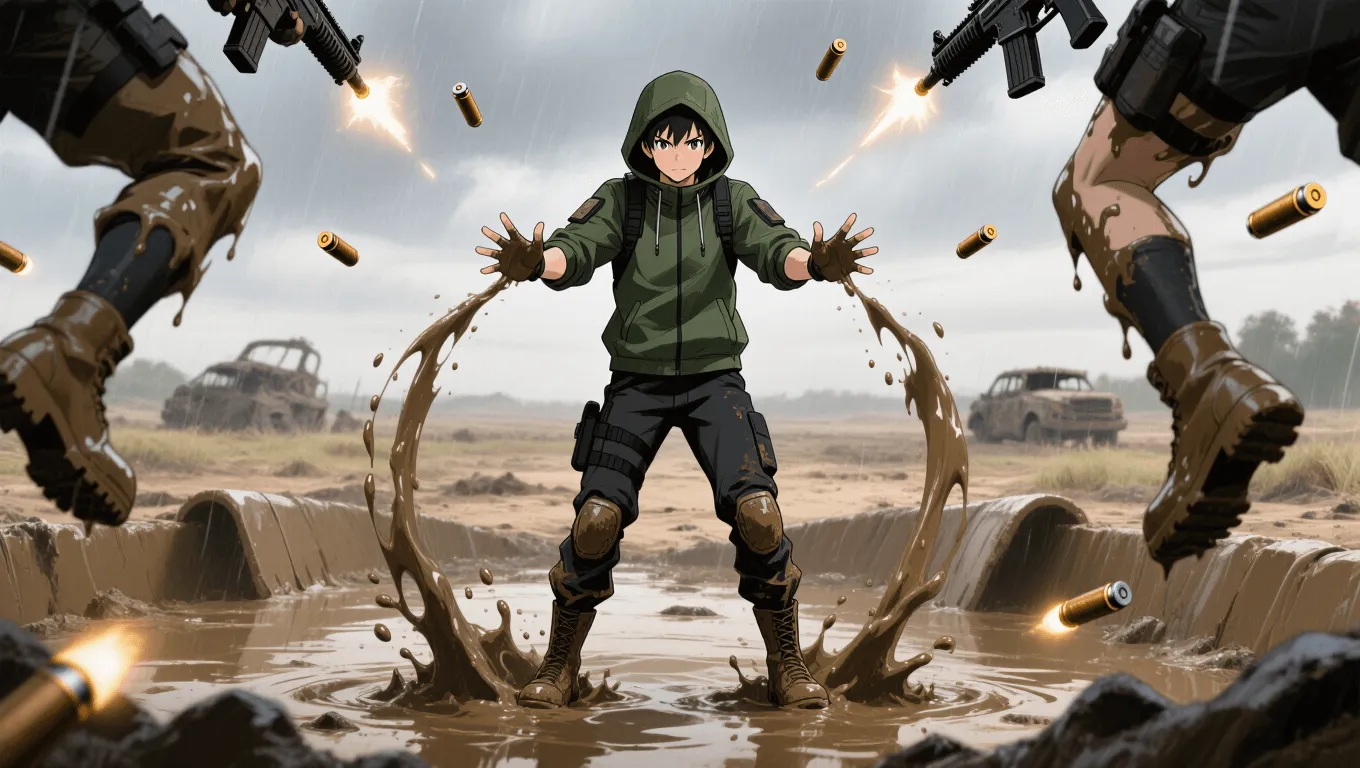
Beginners can dampen small patches of ground, create ankle-to-knee-depth bogs, and form low berms or splash shields. Range is short, flows are slow, and viscosity control is coarse. Effects last minutes without maintenance. Typical feats include stopping a sprinting opponent, jamming one vehicle tire, or deflecting small-arms fire with a quick mud wall.
Level 2
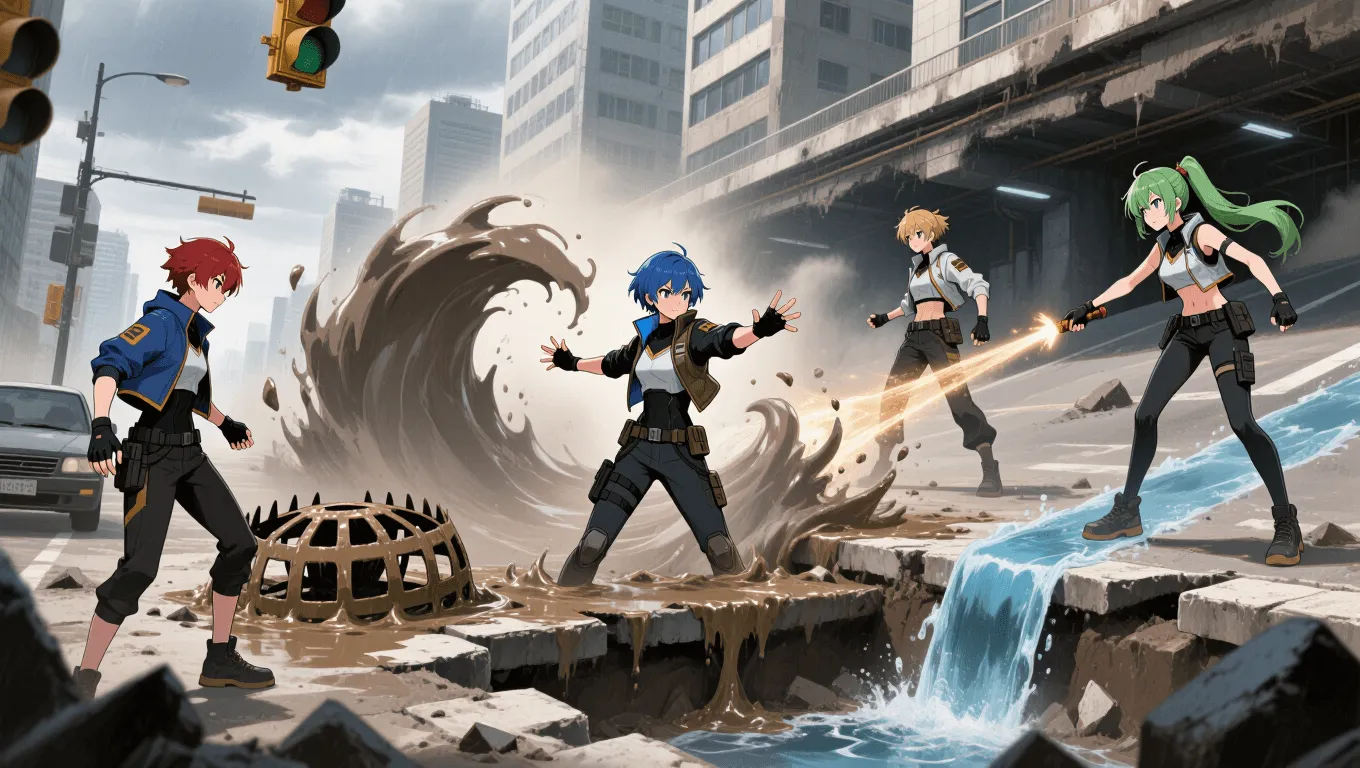
Intermediate users liquefy large zones, raise chest-deep quagmires, and direct sustained slurry waves across streets or down hillsides. They tailor rheology for adhesive traps vs. fast sweeps, shape layered defenses (berm + trench + bog), and redirect natural runoff. Limited subsurface sensing emerges, giving early warnings of unstable ground and buried objects.
Level 3
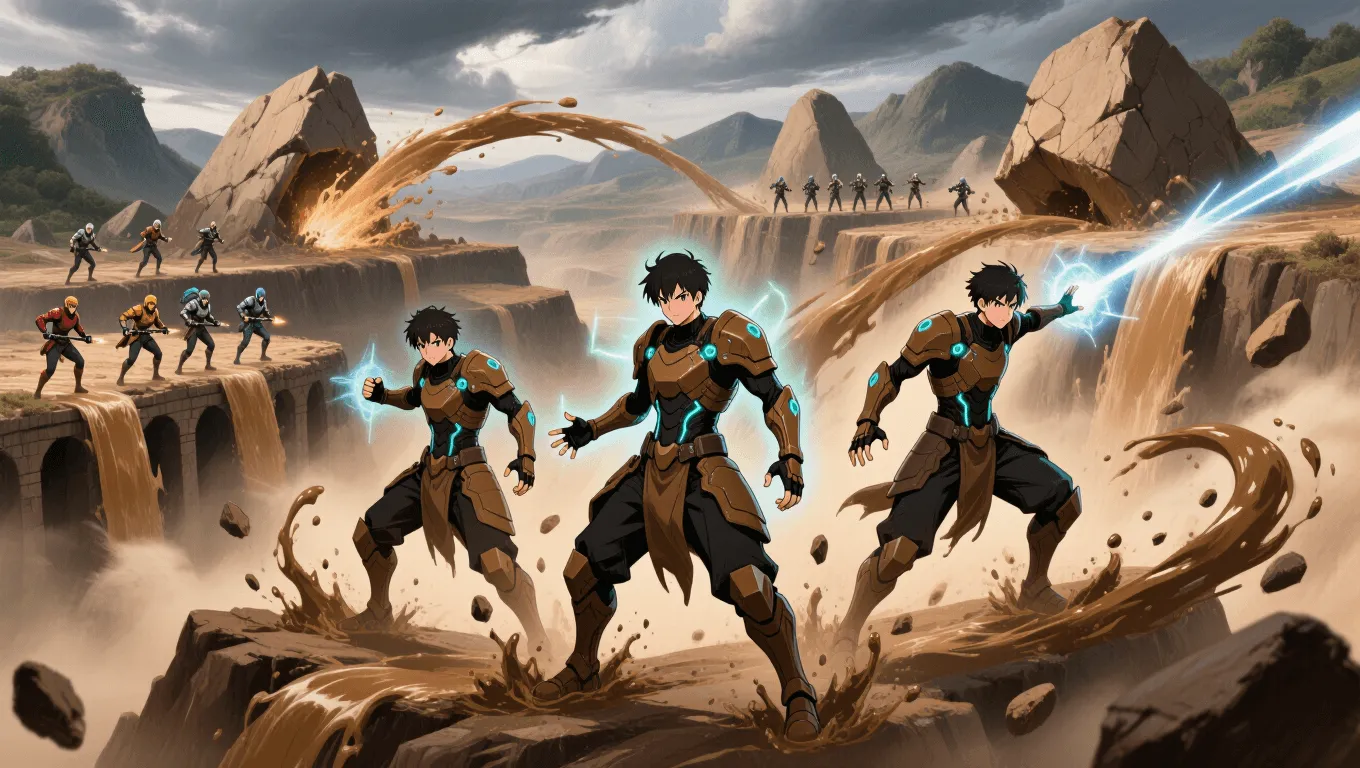
Masters recontour entire hillslopes, split flowing debris into multiple streams, and modulate pore pressure with surgical precision. They can stop or steer natural landslides, launch high-momentum mud surges, and then re-solidify pathways for allies. Fine control allows armored exoshells, shock-absorbing bulwarks, aqueduct-style channels, and combined-arms choreography with allied elemental users.
Limitations of using the Mudslide
-
Material dependence
Mudslide requires accessible sediment and water. Arid rock, sealed concrete, or elevated platforms diminish efficacy unless the user imports material or condenses moisture. -
Terrain gradient and containment
Flows seek downhill paths. On flat ground, range and speed drop; in dense urban grids, walls and curbs can bottleneck or backflow, risking friendly zones. -
Collateral risk
Over-liquefaction undermines structures, roads, and utilities. Misjudged pore pressure can trigger uncontrolled slides, creating hazards for civilians and allies. -
Stamina and focus
Sustaining broad flows and fine viscosity control taxes concentration. Multitasking—e.g., trapping, shielding, and sensing simultaneously—can cause sudden failure. -
Drainage and drying
Sun, wind, or drains thicken or disperse mud over time, forcing constant adjustment. If the mixture dries or runs off, constructed defenses weaken. -
Conductivity and contamination
Mixed debris can hide metal, glass, or energy-conductive elements. Electricity-based attacks may travel through moisture-rich mud, turning fields into hazards. -
Legal and ethical constraints
Altering public landforms, waterways, or foundations has regulatory implications. Responsible users plan containment and post-action restoration.
Weakness against what other superpowers
-
Cryokinesis / Ice manipulation
Freezing mud immobilizes flows and hardens traps into brittle, crackable shells. -
Aerokinesis / Wind manipulation
Strong, dry winds evaporate water, erode surfaces, and blow spray away, reducing cohesion and blinding effects. -
Pyrokinesis / Heat manipulation
Rapid heating bakes mud into rigid crusts, locking shapes that the user may not control and exposing them to shattering counterattacks. -
Earth Hardening or Crystalization
Abilities that increase granule bonding (stone skin, crystal growth) negate liquefaction and restore footing under enemies. -
Gravity Control and Flight
Levitation, teleportation, or gravity reduction bypasses area denial entirely; foes simply avoid touching the ground. -
Hydrophobic Fields and Force Barriers
Repelling water collapses slurry structure; force domes shed incoming waves and keep occupants dry and mobile. -
Magnetism and Metal Manipulation
Against armored vehicles, magnetism can tow targets out of bogs or assemble rigid tracks over mud. -
Plant surge / Biokinesis
Rapid root networks stitch soil together, raising shear strength and resisting slide initiation; vines create aerial walkways over bogs.
Synergistic Power Combos
-
Mudslide + Hydrokinesis
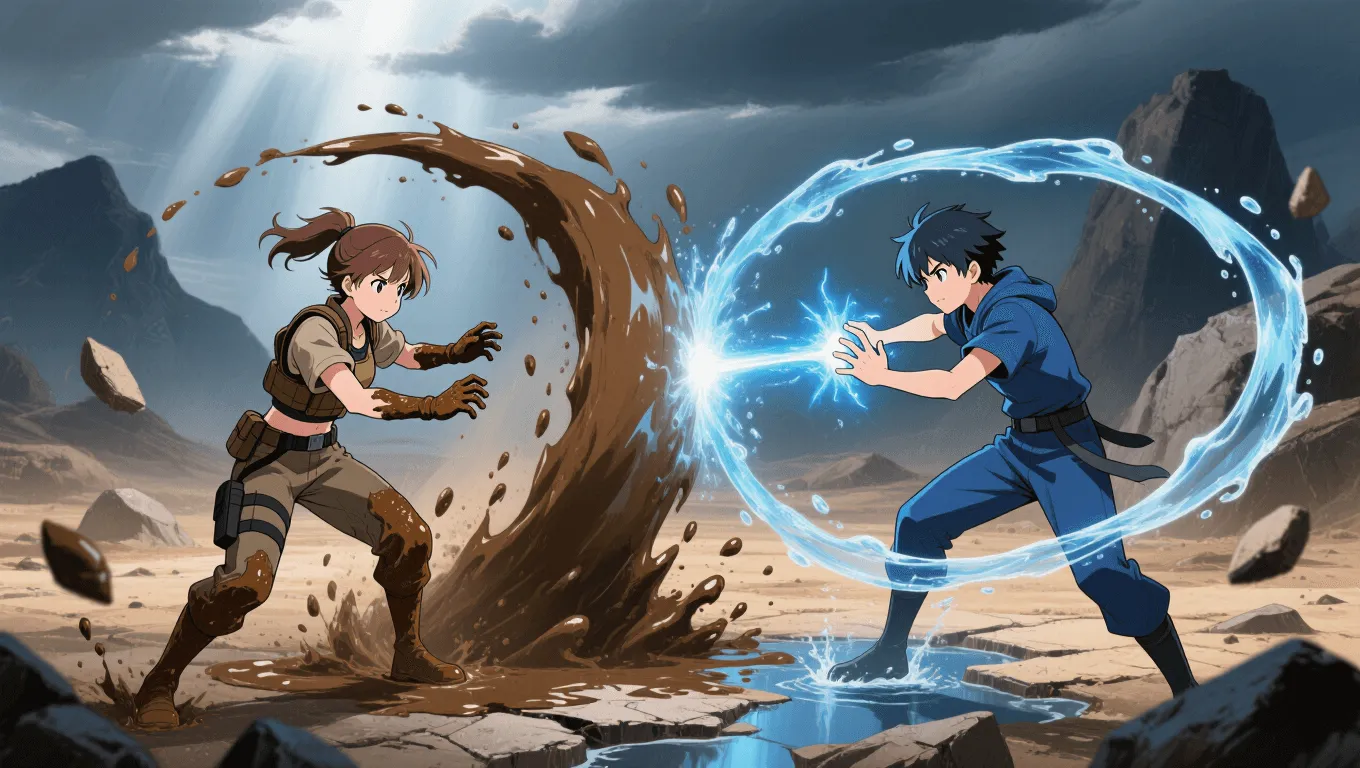
Water control expands range, boosts flow rate, and keeps traps saturated. Precision jets can also carve channels mid-battle.
-
Mudslide + Geokinesis
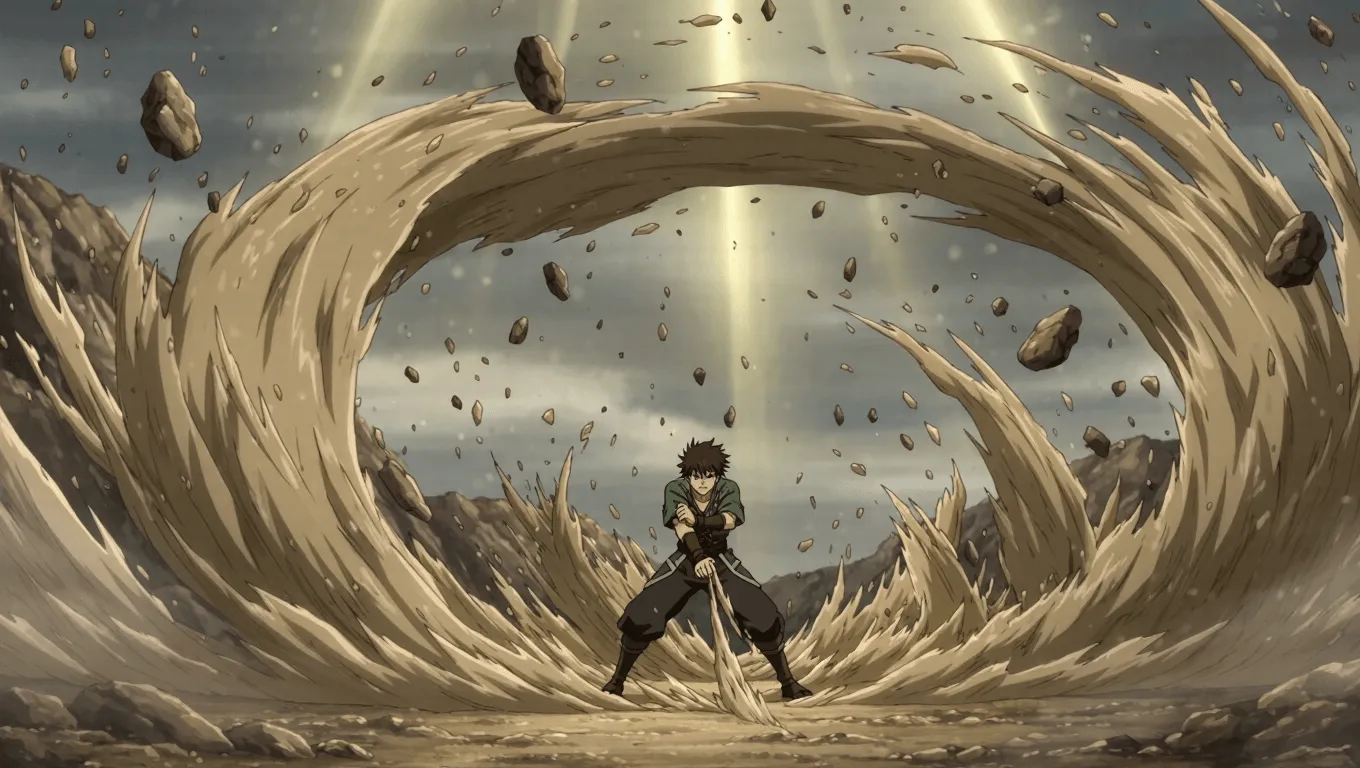
Solid earth scaffolding beneath controlled slurry enables layered defenses, trapdoors, and quick hardening of safe corridors.
-
Mudslide + Aerokinesis
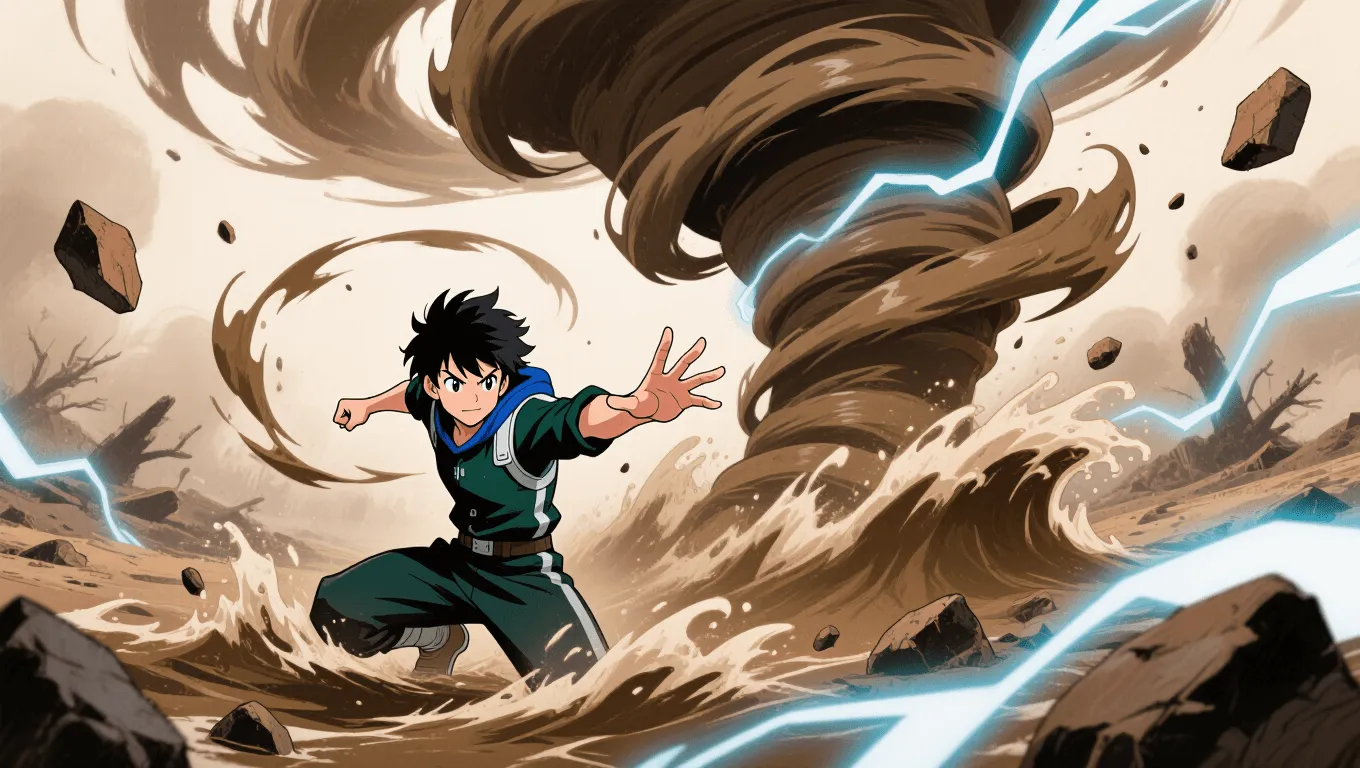
Wind pressure turns a slurry wave into a directed battering ram; aerial drying can harden capture shells on command.
-
Mudslide + Cryokinesis

Freeze-and-hold tactics convert muddy restraints into ice cuffs; perimeter rings can be frozen to seal breaches.
-
Mudslide + Plant Manipulation
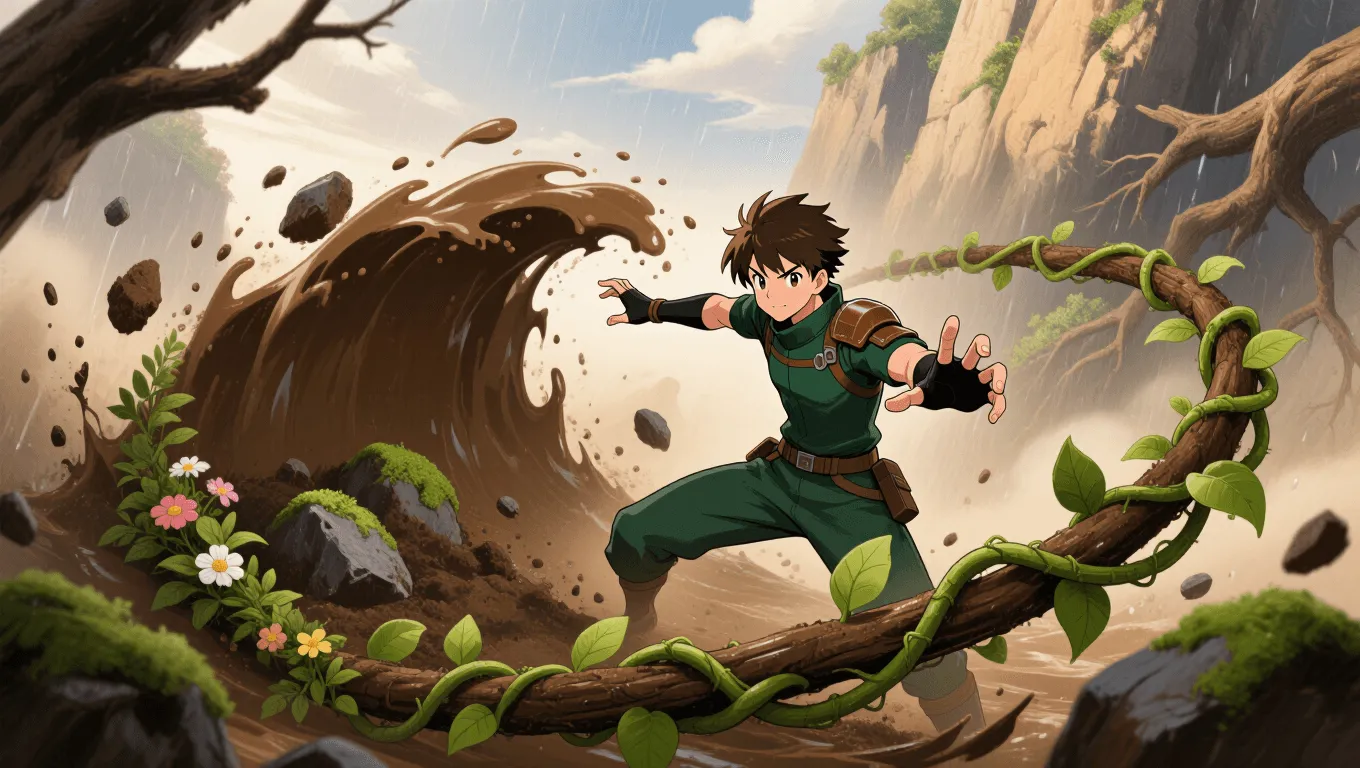
Roots reinforce chosen zones while leaving kill boxes weak, producing predictable enemy sink points and stable ally platforms.
-
Mudslide + Sound/Seismic control

Low-frequency vibration promotes liquefaction in targeted pockets, helping collapse enemy cover or open sudden pitfalls.
-
Mudslide + Gravity manipulation

Increased gravity amplifies suction traps; decreased gravity reduces friendly bogging while boosting mud surfing speed.
-
Mudslide + Light/Illusion

Visual distortions hide true depth and footing, luring enemies into prepared quagmires.
Known Users
While few mainstream characters are dedicated “mud controllers,” several canon figures demonstrate adjacent abilities that exemplify Mudslide techniques:
-
Terra (DC Comics) – A classic geokinetic who could liquefy and shape terrain in ways comparable to directed landslides. See the character profile on DC Database.
-
Hydro-Man (Marvel Comics) – A water-based villain capable of saturating terrain and blending with sediment, a precursor to adhesive slurry tactics. Learn more on Marvel Database.
-
Clayface (DC Comics) – A malleable clay shapeshifter whose control over viscous earth materials echoes high-level mud rheology control. Character page on Wikipedia.
-
Swamp Thing (DC Comics) – Through plant-matter mastery and environmental manipulation, he demonstrates containment and remediation akin to controlled mud barriers. Read more on the DC Database.
These examples illustrate geokinesis–hydrokinesis overlap, sediment engineering, and viscosity-based combat—core elements of Mudslide as a specialized power set.
For deeper dives into powers with similar mechanics, browse the growing catalog on /superpower-wiki/ or try a fresh idea with the generator at /.
